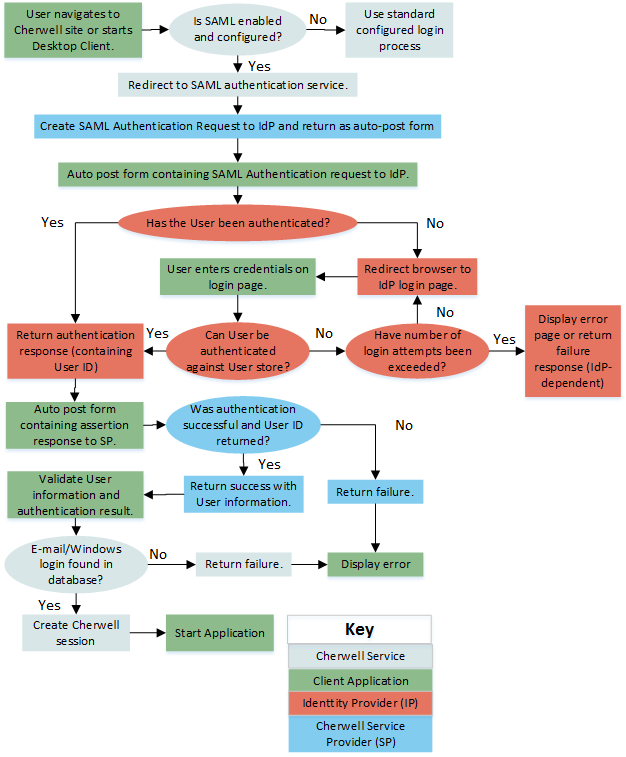About SAML
CSM supports SAML 2.0 as a service provider. Before SAML can be used, the integration must be configured in CSM Administrator and in the identity provider.
When a user starts CSM, including the CSM Desktop Client or CSM Browser Client, a Cherwell Service sends an authentication request to the user’s identity provider. Users who are not already logged in to an identity provider are presented a log in window so they can enter their credentials, which are authenticated by the identity provider. If the authentication is successful, the identity provider passes a response containing one or more assertion statements to the Cherwell assertion consumer Service.
An assertion indicates that the identity provider has successfully authenticated the user and includes a user name ID (example: email address or Windows login ID) and possibly additional optional attributes about the user (example: Name, department, and more). The Cherwell Service uses the Name ID to find the user information in CSM (the user can be either a customer or an internal user), and then logs the user in to the Cherwell application without requiring further user interaction.
The figure shows the CSM SAML SSO process.

The figure shows the CSM SAML IdP Initiated process.
